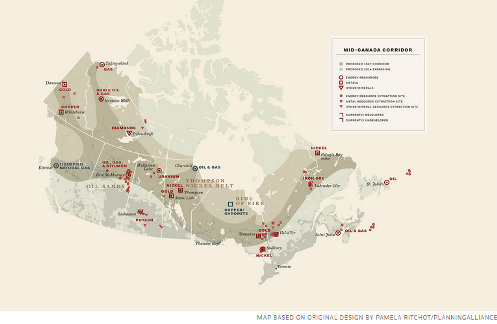Click here for a 27 minute interview: http://www.cbc.ca/thecurrent/episode/2014/10/15/canada-by-design-a-plan-to-develop-the-mid-canada-corridor/
We Canadians mostly live in the words of humorist Arthur Black, like weather-stripping along the U.S. border. But North of our Southern metropolises and still South of the treeline lurks an economic sweet spot. Our series By Design considers the Mid-Canada Corridor, home to up to 70 per cent of Canada’s wealth but not a lot of its people.
Humourist Stephen Leacock wrote that he’d likely never go to James Bay, but he’d somehow feel lonely if it wasn’t there. Perhaps its the north that should feel lonely since so few Canadians live there. Today, as part of our ongoing project ;By Design, about design and the impact it has in our lives, we’re taking a look at the possibility of design on a national scale. Most of us Canadians live within a couple hours’ drive of the U.S. border. Vast stretches of Canada — full of resources — remain scarcely populated. John van Nostrand thinks that should change.

























